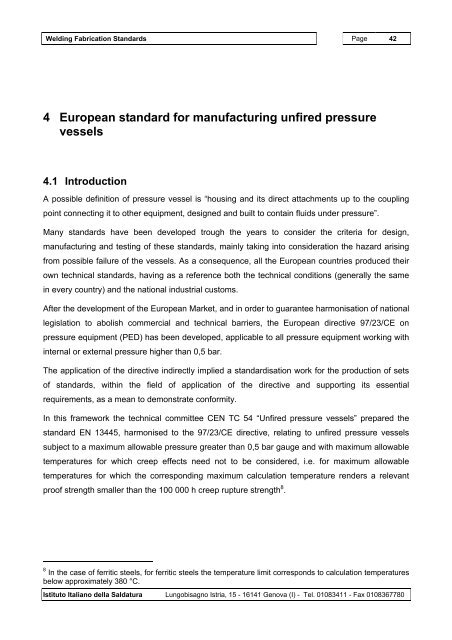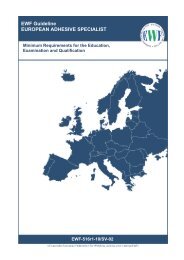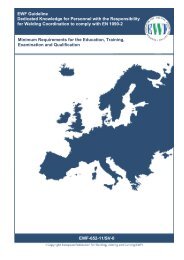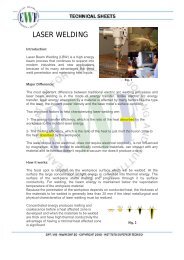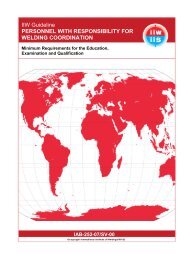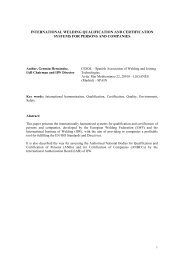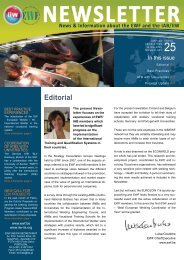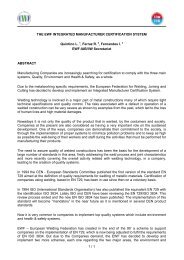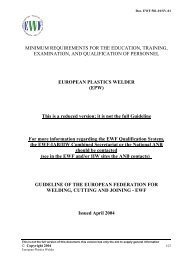Welding Fabrication Standards - EWF
Welding Fabrication Standards - EWF
Welding Fabrication Standards - EWF
Create successful ePaper yourself
Turn your PDF publications into a flip-book with our unique Google optimized e-Paper software.
<strong>Welding</strong> <strong>Fabrication</strong> <strong>Standards</strong> Page 42<br />
4 European standard for manufacturing unfired pressure<br />
vessels<br />
4.1 Introduction<br />
A possible definition of pressure vessel is “housing and its direct attachments up to the coupling<br />
point connecting it to other equipment, designed and built to contain fluids under pressure”.<br />
Many standards have been developed trough the years to consider the criteria for design,<br />
manufacturing and testing of these standards, mainly taking into consideration the hazard arising<br />
from possible failure of the vessels. As a consequence, all the European countries produced their<br />
own technical standards, having as a reference both the technical conditions (generally the same<br />
in every country) and the national industrial customs.<br />
After the development of the European Market, and in order to guarantee harmonisation of national<br />
legislation to abolish commercial and technical barriers, the European directive 97/23/CE on<br />
pressure equipment (PED) has been developed, applicable to all pressure equipment working with<br />
internal or external pressure higher than 0,5 bar.<br />
The application of the directive indirectly implied a standardisation work for the production of sets<br />
of standards, within the field of application of the directive and supporting its essential<br />
requirements, as a mean to demonstrate conformity.<br />
In this framework the technical committee CEN TC 54 “Unfired pressure vessels” prepared the<br />
standard EN 13445, harmonised to the 97/23/CE directive, relating to unfired pressure vessels<br />
subject to a maximum allowable pressure greater than 0,5 bar gauge and with maximum allowable<br />
temperatures for which creep effects need not to be considered, i.e. for maximum allowable<br />
temperatures for which the corresponding maximum calculation temperature renders a relevant<br />
proof strength smaller than the 100 000 h creep rupture strength 8 .<br />
8<br />
In the case of ferritic steels, for ferritic steels the temperature limit corresponds to calculation temperatures<br />
below approximately 380 °C.<br />
Istituto Italiano della Saldatura Lungobisagno Istria, 15 - 16141 Genova (I) - Tel. 01083411 - Fax 0108367780


